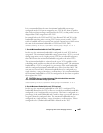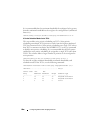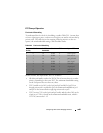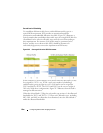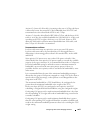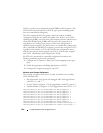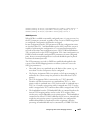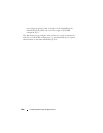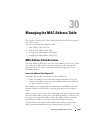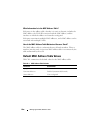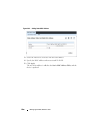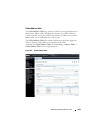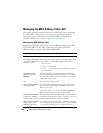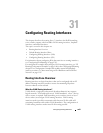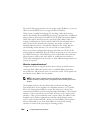
Managing the MAC Address Table 1015
30
Managing the MAC Address Table
This chapter describes the L2 MAC address table the switch uses to forward
data between ports.
The topics covered in this chapter include:
• MAC Address Table Overview
• Default MAC Address Table Values
• Managing the MAC Address Table (Web)
• Managing the MAC Address Table (CLI)
MAC Address Table Overview
The MAC address table keeps track of the MAC addresses that are associated
with each port to allow the switch to forward unicast traffic through the
appropriate port. This table is sometimes called the bridge table or the
forwarding database.
How Is the Address Table Populated?
The MAC address table can contain two types of addresses:
• Static: The address has been manually configured and does not age out.
• Dynamic: The address has been automatically learned by the switch and
can age out when it is not in use.
Static addresses are configured by the administrator and added to the table.
Dynamic addresses are learned by examining information in the Ethernet
frame.
When a frame arrives on a port, the switch looks at the frame header to learn
the source MAC address of the frame, then adds the address, VLAN ID, and
the ingress port to the MAC address table. The address table is constantly
updated as new addresses are learned, and unused addresses age out.
A frame that has a destination MAC address that matches an entry in the
table is forwarded immediately to the associated port(s)/VLAN(s).



